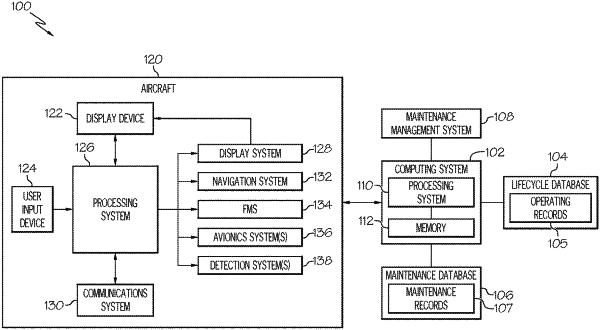| CPC B64F 5/60 (2017.01) [G06N 5/025 (2013.01); G06N 5/04 (2013.01); G07C 5/085 (2013.01); G07C 5/0816 (2013.01)] | 20 Claims |

|
1. A method of monitoring a component of a vehicle, the method comprising:
obtaining measurement data characterizing operation of the component for an individual lifecycle between deployment and maintenance, wherein the measurement data is measured by one or more sensors during operation of the vehicle during the individual lifecycle;
obtaining contextual data associated with the operation of the vehicle over the individual lifecycle, wherein the contextual data includes at least one of ambient meteorological data or climate zone data pertaining to operation of the vehicle over the individual lifecycle between deployment and replacement of the component;
clustering the component to a first degradation group from among a plurality of different degradation groups based on a relationship between the measurement data and the contextual data for the individual lifecycle and historical measurement data and historical contextual data associated with a subset of different instances of the component of the first degradation group, wherein the first degradation group comprises a respective subset of prior lifecycles for a respective subset of different instances of the component and the historical measurement data and historical contextual data comprise respective measurement data and respective contextual data characterizing operation of respective instances of the respective subset of different instances of the component for respective prior lifecycles between deployment and maintenance of the respective instance of the component;
determining a value for a degradation metric indicative of an expected lifecycle duration for the component in the future before progressing beyond a threshold as a function of the measurement data for the individual lifecycle and the contextual data over the individual lifecycle using a predictive maintenance model associated with the first degradation group; and
outputting, via a user interface device, a notification of a particular maintenance action recommended to be proactively scheduled and an indication of the expected lifecycle duration for the component before progressing beyond the threshold.
|